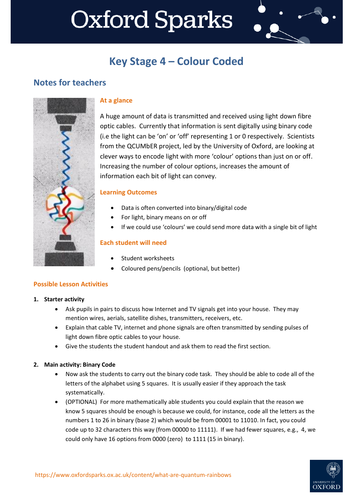




A huge amount of data is transmitted and received using light down fibre optic cables. Currently that information is sent digitally using binary code (i.e the light can be ‘on’ or ‘off’ representing 1 or 0 respectively. Scientists from the QCUMbER project, led by the University of Oxford, are looking at clever ways to encode light with more ‘colour’ options than just on or off. Increasing the number of colour options, increases the amount of information each bit of light can convey.
In this resource, students learn how information can be converted into code, such as binary (using 1s and 0s), or how using colours instead of just ‘on’ and ‘off’ can allow you to encode more information with fewer ‘bits’.
Learning outcomes:
- Data is often converted into binary/digital code
- For light, binary means on or off
- If we could use ‘colours’ we could send more data with a single bit of light
See more at: https://www.oxfordsparks.ox.ac.uk/content/what-are-quantum-rainbows
Something went wrong, please try again later.
This resource hasn't been reviewed yet
To ensure quality for our reviews, only customers who have downloaded this resource can review it
Report this resourceto let us know if it violates our terms and conditions.
Our customer service team will review your report and will be in touch.